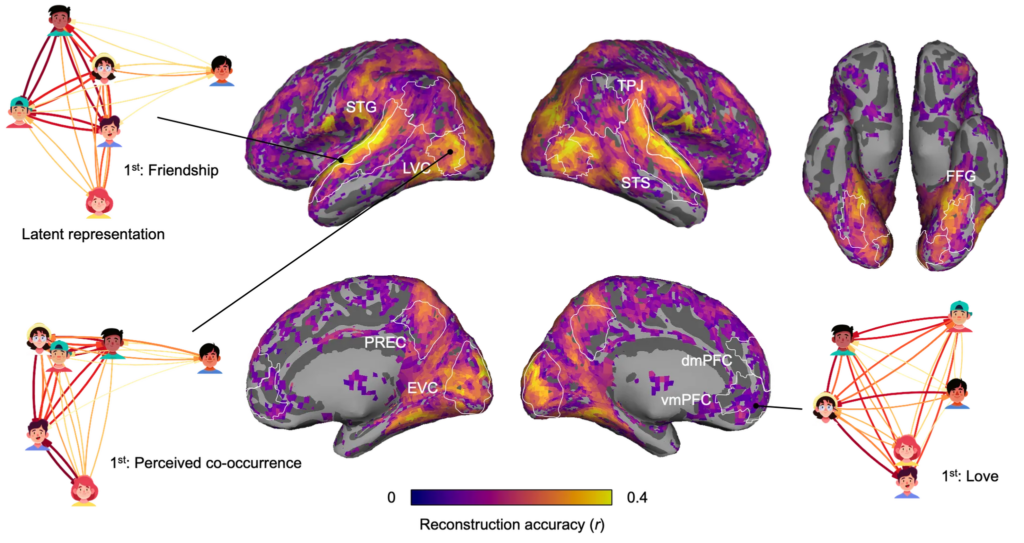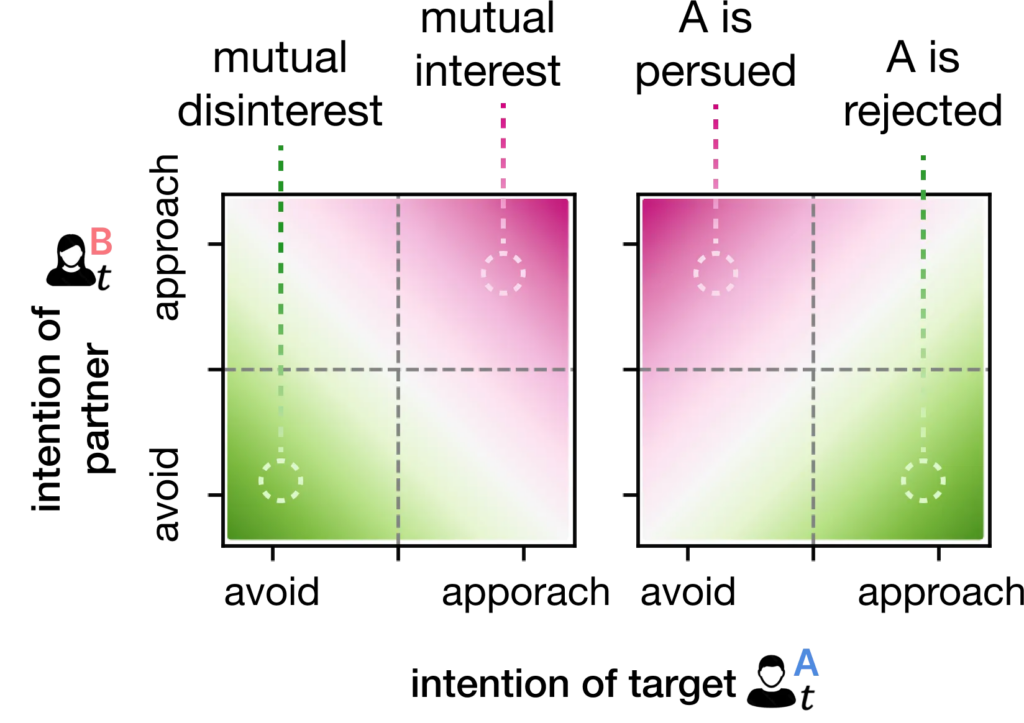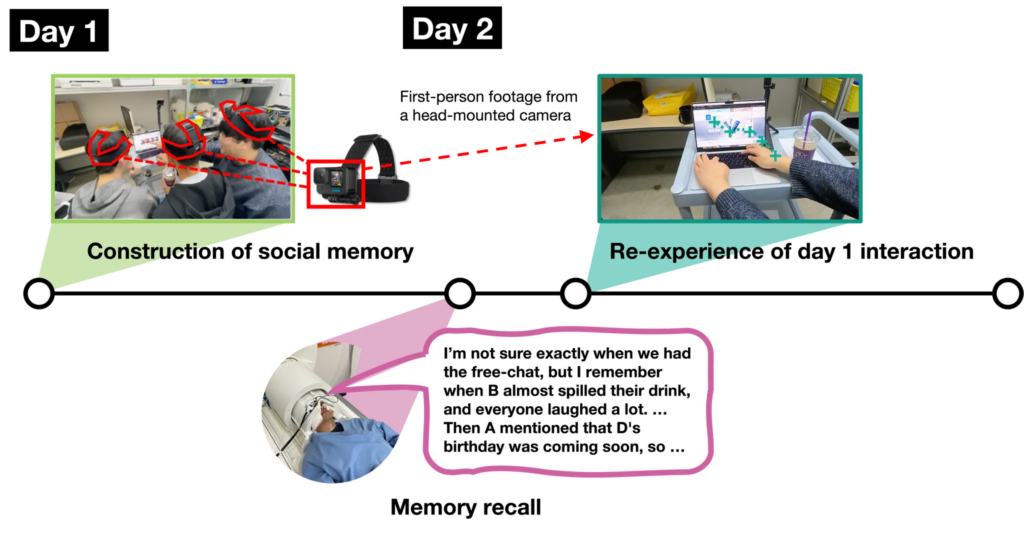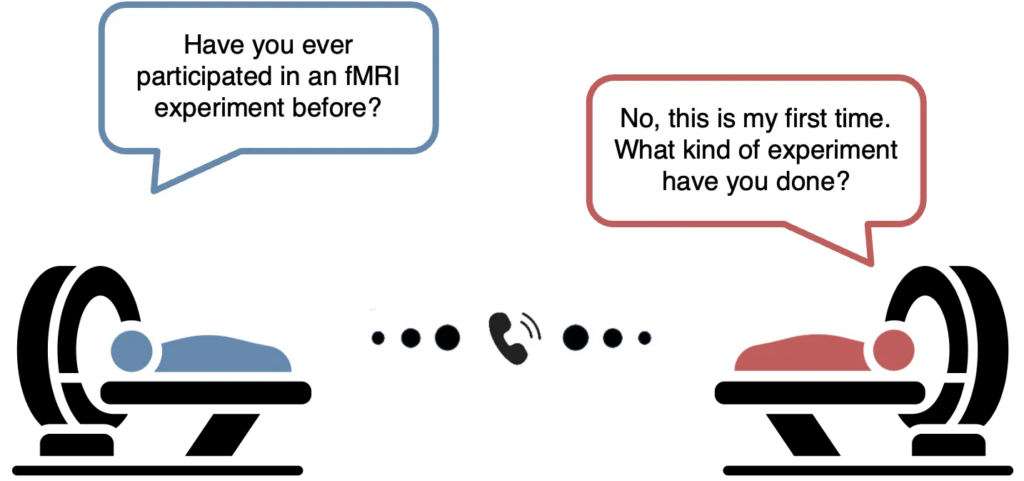We study how people perceive, predict, and remember others in naturalistic settings—from movies to real conversations—by combining fMRI, eye-tracking, computational modeling (e.g., graph models, language models), and hyperscanning.
Neural representation of social relationship graphs

How does the brain understand the dynamic social world in real-life? We explore how we form and retrieve relationships based on dynamic social interactions. Using movie stimuli, we modeled social interactions as valence-based relational graphs that change over time—just like real-life friendships or romantic ties do. By analyzing how people perceive others’ actions and emotions, we show that the brain builds and maintains multi-layered representations of social relationships.Predicting others in dyadic social interactions
Predicting others in dyadic social interactions

How does the human brain generate predictions about others during dyadic social interactions? Understanding how others feel and how their relationships evolve during social interactions is crucial for navigating dynamic social environments. We use movies featuring dyadic conversations and computational modeling to characterize the neurocomputational mechanisms underlying social prediction—how social interaction information is processed and integrated to anticipate a partner’s future states and actions.
Memories in real-world social interactions

How do social interactions shape our memory? After a fun hangout, friends often recall the same experience differently—each memory shaped by each person’s role in the interaction. Everyday memory is built through these active social dynamics, where individuals engage as agents influencing one another. In this project, we recruit close-friend groups, and induce unscripted, real-life social interactions, primarily consisting of conversation. By analyzing individual recall behavior and neural data, we aim to investigate how active participation and the structure of conversation influence memory organization.
Hyperscanning during conversation

How do social interaction dynamics evolve during conversation? Social interaction is inherently dynamic and contingent, and conversation is its most natural expression—yet such exchanges have been challenging to study with fMRI. To address this, we developed an interactive, in-scanner dyadic conversation paradigm for fMRI hyperscanning, using MR-compatible audio and voice-chat. This approach allows us to examine how neural dynamics change as partners move from being strangers to feeling close over the course of an interaction.